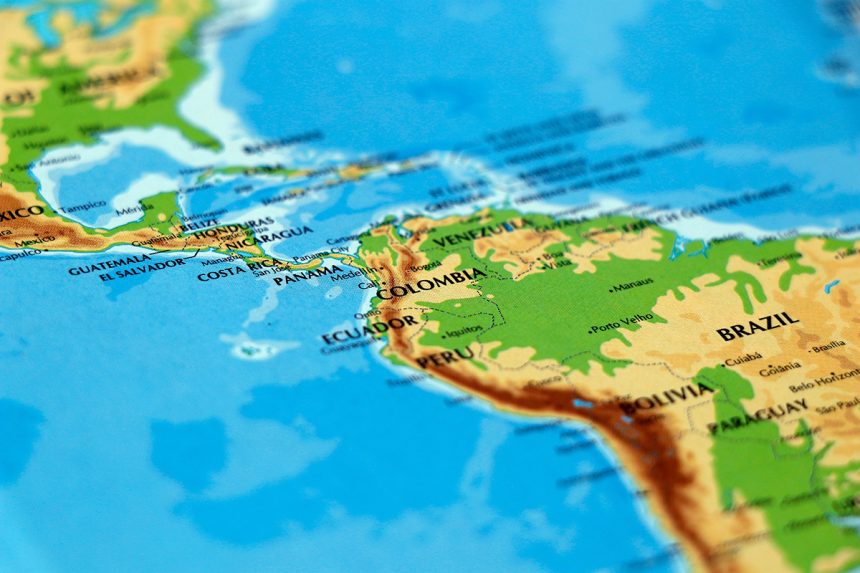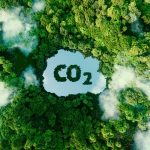Latin America enters 2025 at a crossroads, shaped by shifting global dynamics, economic resilience, and evolving threats. While the region faces uncertainty with the return of Donald Trump to the U.S. presidency, climate change and organized crime continue to pose significant risks. However, economic stability and strategic opportunities in key industries offer a path forward. With GDP growth projected at 2.5%, slightly above 2024’s 2.1%, Latin America is showing signs of recovery, albeit at a slower pace than other emerging markets.
Trump’s Return and Its Impact on Latin America
The return of Donald Trump to the White House is expected to have major consequences for Latin America, particularly in trade, security, and economic policy. Mexico stands at the highest risk due to its extensive trade links with the U.S. and its role in migration policy. A potential confrontation over tariffs or border security measures could push Mexico’s economy into recession, especially under the leadership of newly elected President Claudia Sheinbaum.
Other nations, including Venezuela, Cuba, and Nicaragua, may face renewed U.S. pressure, though the extent of Trump’s intervention remains uncertain. Meanwhile, conservative leaders such as Argentina’s Javier Milei and El Salvador’s Nayib Bukele may benefit from closer ties with Washington. Trump’s approach to the region could fluctuate between economic cooperation and punitive policies, leaving many governments uncertain about their future relations with the U.S.
Climate Change as a Political and Economic Threat
Extreme weather events continue to disrupt Latin America, turning climate change into a central political and economic challenge. In Ecuador, severe droughts in 2024 led to prolonged blackouts, damaging public confidence in the government and shifting the political landscape ahead of elections. Brazil faced both devastating floods and historic droughts, affecting millions of residents, damaging infrastructure, and even impacting the country’s GDP.
The Panama Canal’s water shortages hampered global shipping routes, while wildfires in Chile caused significant casualties and economic losses. Across the region, deforestation and environmental degradation have escalated, with scientists warning of a potential tipping point in the Amazon that could permanently alter weather patterns. Despite these risks, Latin America holds crucial resources for the global energy transition, including lithium and other minerals necessary for green technologies. If leveraged effectively, these resources could position the region as a leader in sustainable development.
The Evolution of Organized Crime
Organized crime in Latin America has undergone significant transformations, expanding beyond drug trafficking into other lucrative industries. Cocaine production has more than doubled in the past decade, with distribution routes now reaching Asia, Africa, and even Latin American countries themselves. Nations like Ecuador and Chile, previously known for stability, have become hotspots for cartel activity as criminal organizations battle for control of strategic ports.
Illegal mining has emerged as an even more profitable enterprise than the drug trade in some regions, particularly in Colombia and Peru. Criminal networks have also infiltrated local and national governments, further complicating efforts to combat corruption and violence. The financial impact of crime on the region is staggering, costing Latin America an estimated 3.4% of its GDP annually. As crime rates continue to rise, public demand for stricter security measures is increasing, with policies like Bukele’s mass incarceration model gaining traction in several countries.
A Resilient but Slow-Growing Economy
Despite these challenges, Latin America’s economy remains relatively stable. Inflation has dropped to 3.4%, down from its peak of 8.2% in 2022, and most central banks are expected to continue cutting interest rates. Foreign investment remains strong, particularly in commodities and green energy sectors, with Latin America attracting 15% of the world’s foreign direct investment.
Optimism among citizens is also on the rise, with a record 52% expressing confidence in their economic future. However, concerns persist over slowing growth in Mexico and fiscal instability in Brazil. While the region’s long-term growth rate remains around 2%, experts warn that this may not be sufficient to meet rising demands for economic development and social progress.
Uncertainty and Opportunity in 2025
As Latin America navigates the complexities of 2025, it faces a mixture of risks and opportunities. Trump’s unpredictable policies, climate-induced disruptions, and the rise of organized crime create significant challenges. However, the region’s economic resilience, strategic resources, and increasing foreign investment suggest that it is far from a crisis point. While Latin America may continue to lag behind other emerging markets in terms of growth, it remains a region of immense potential for those willing to adapt to its ever-changing landscape.





